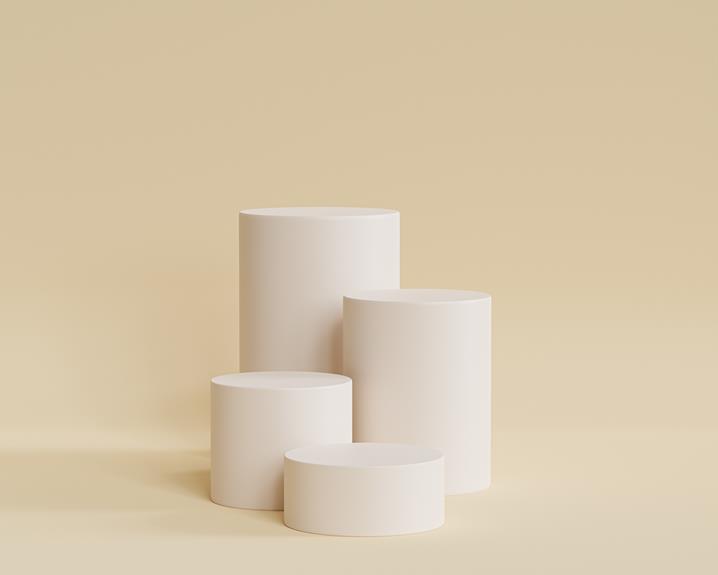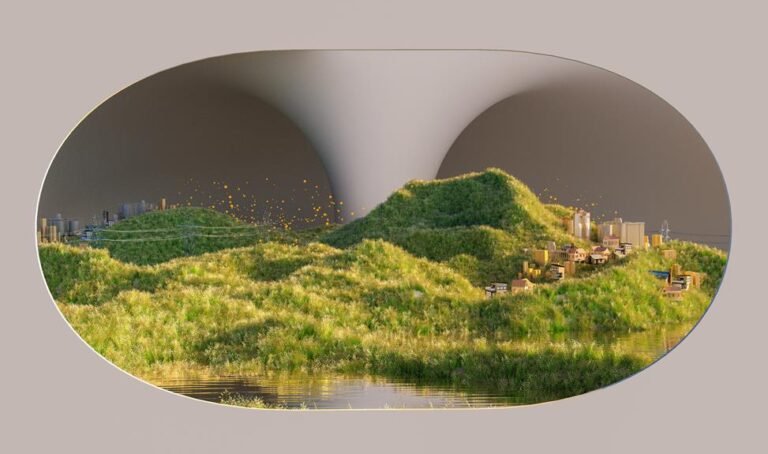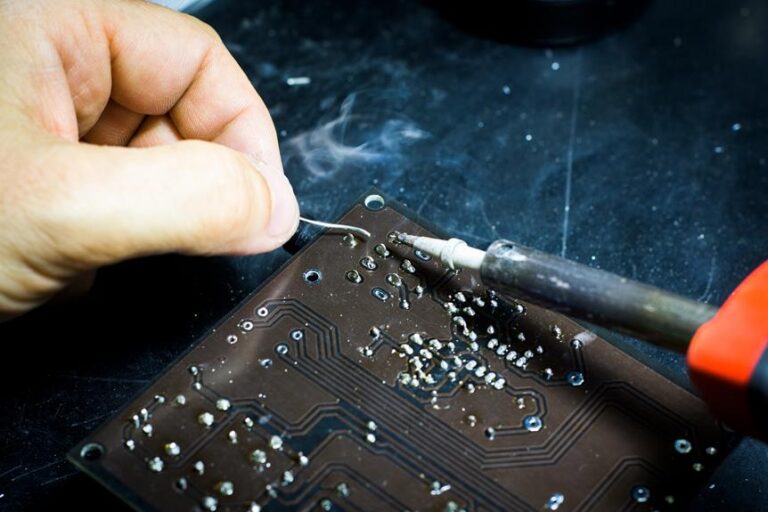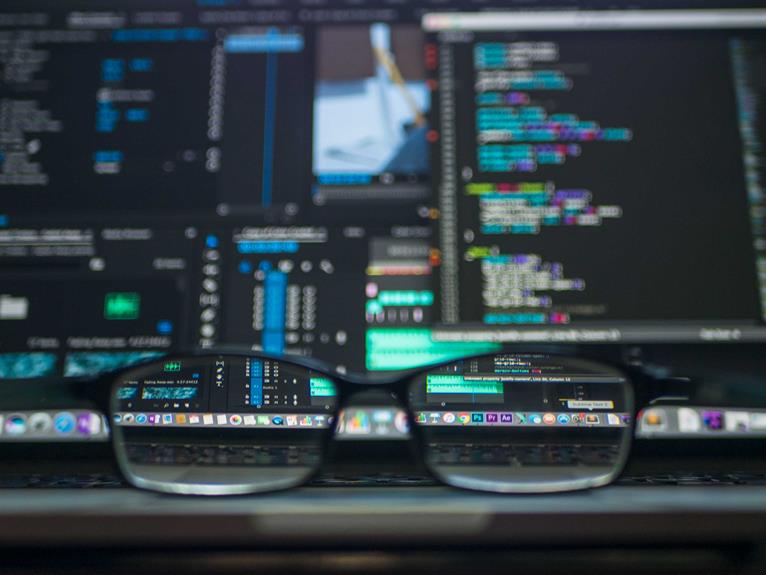Wood-Based Filament: Adding Natural Beauty to Your 3D Prints
Step into the world of 3D printing and experience the allure of wood-based filament. Immerse yourself in the craftsmanship of creating realistic wood-like prints, adding a touch of natural beauty to your creations.
In this article, we will explore the types of wood-based filament available, the advantages and challenges of using this innovative material, and provide tips and techniques for achieving stunning wood-like finishes.
Discover how to elevate your 3D prints to new heights with the captivating allure of wood-based filament.
Key Takeaways
- Wood-based filament, such as PLA wood filament and ABS wood filament, offers a range of properties for various applications, including easy printing, durability, and the ability to be sanded, stained, and varnished.
- Wood-based filament adds a natural and organic touch to 3D prints, creating a unique and captivating visual experience with a realistic wood-like texture. It is particularly suitable for furniture prototypes, architectural models, and decorative objects.
- Wood-based filament is sustainable and eco-friendly, as it is made from sustainably sourced wood materials and is biodegradable. It reduces the environmental impact of 3D printing and offers excellent printability and improved print quality.
- Achieving realistic wood-like prints with wood-based filament requires selecting the right filament, adjusting printing settings, employing post-processing techniques, and choosing appropriate model designs. Considerations include potential challenges, such as excessive wear on nozzles and equipment damage, as well as the use of appropriate wood finishes and experimenting with different techniques.
Types of Wood-Based Filament for 3D Printing
When considering wood-based filament for 3D printing, it is important to understand the different types available in the market. Wood-based filament is a unique material that allows users to create 3D prints with the appearance and feel of real wood. These filaments are composed of a combination of wood particles and a polymer matrix, resulting in a material that can be extruded through a 3D printer nozzle.
There are several types of wood-based filaments available, each with its own set of properties and characteristics. One common type is PLA (polylactic acid) wood filament, which is a blend of PLA and wood particles. PLA wood filament is known for its ease of printing and its ability to produce prints with a smooth and natural wood-like finish.
Another type of wood-based filament is ABS (acrylonitrile butadiene styrene) wood filament, which combines ABS and wood particles. ABS wood filament is known for its durability and strength, making it suitable for functional prints that require more robustness.
Wood-based filaments offer a range of properties that make them suitable for different applications. They can be sanded, stained, and even varnished, allowing users to enhance the natural wood-like appearance of their prints. Additionally, these filaments often produce prints with a unique texture and aroma, further adding to their appeal.
Advantages of Using Wood-Based Filament
Wood-based filament offers several advantages for 3D printing.
Firstly, it imparts a natural aesthetic appeal to the printed objects, enhancing their visual appeal and uniqueness.
Secondly, wood-based filament is a sustainable and eco-friendly option as it is made from renewable resources, reducing the environmental impact of 3D printing.
These advantages make wood-based filament a popular choice for those seeking to add a touch of natural beauty to their 3D prints while being conscious of sustainability.
Natural Aesthetic Appeal
Enhancing the visual allure of your 3D prints, wood-based filament offers a range of advantages that elevate the aesthetic appeal of your creations. This innovative wood 3D printing material allows you to add a natural and organic touch to your prints, creating a unique and captivating visual experience. With its realistic wood-like texture and appearance, wood-based filament brings a sense of warmth and authenticity to your designs. Whether you are creating furniture prototypes, architectural models, or decorative objects, this material enables you to achieve a natural and rustic look that is difficult to replicate with traditional filaments.
By incorporating wood-based filament into your 3D printing projects, you can explore new dimensions of creativity and achieve stunning results that will captivate and impress your audience.
In addition to its natural aesthetic appeal, wood-based filament also offers sustainable and eco-friendly benefits.
Sustainable and Eco-Friendly
The utilization of wood-based filament in 3D printing offers notable advantages in terms of sustainability and eco-friendliness. By using wood fibers as the primary material, this filament provides a renewable and biodegradable alternative to traditional plastics.
Here are four key benefits of using wood-based filament:
- Reduced environmental impact: Wood-based filament is derived from sustainably sourced wood materials, making it a more environmentally friendly option compared to petroleum-based plastics.
- Biodegradability: Unlike conventional plastics that can take hundreds of years to decompose, wood-based filament is biodegradable, which means it can naturally break down over time, reducing waste accumulation.
- Natural aesthetic: The use of wood-based filament adds a unique and natural aesthetic to 3D prints, making them visually appealing and distinctive.
- Improved print quality: Wood-based filament offers excellent printability, allowing for precise and detailed prints. It also produces a distinct wood-like texture and smell, enhancing the overall look and feel of the printed object.
Understanding the Aesthetics of Wood-Like Prints
To fully grasp the visual appeal of wood-like prints, it is important to delve into the intricacies of their unique characteristics. Wood-based filament is designed to mimic the look and feel of real wood, providing a natural and organic aesthetic to 3D prints. The filament is composed of a blend of thermoplastic polymers, such as PLA or ABS, and wood particles or fibers, which give it a distinct appearance.
The aesthetics of wood-like prints are determined by various factors, including the type of wood used in the filament, the size and distribution of the wood particles, and the printing settings. Different types of wood, such as pine, bamboo, or oak, can be used to create different visual effects. Fine wood particles can produce a smooth surface, while larger particles can create a more textured and grainy appearance.
The printing settings also play a crucial role in achieving the desired wood-like aesthetics. Factors like layer height, print speed, temperature, and cooling can affect the final appearance of the print. Experimentation with these settings can help achieve the desired level of detail and texture.
Wood-like prints offer a unique and visually appealing alternative to traditional 3D prints. They can be used to create decorative objects, artistic sculptures, or even functional items with a natural touch. The aesthetics of wood-like prints provide a liberating opportunity for designers and makers to explore the beauty of nature in their creations.
Challenges in Printing With Wood-Based Filament
Despite the inherent beauty and unique aesthetic that wood-based filament offers, there are several challenges that arise when printing with this material. Wood-based filament, although visually appealing, presents certain difficulties that must be overcome to achieve high-quality prints. These challenges include:
- Clogging: Wood-based filaments contain actual wood particles, which can lead to nozzle clogging. The wood particles tend to settle and solidify at the nozzle's tip, obstructing the extrusion process.
- Abrasion: Wood-based filaments are abrasive due to the presence of wood particles. This can cause excessive wear on the nozzle and other components of the 3D printer, leading to reduced print quality and potential damage to the equipment.
- Layer adhesion: Achieving proper layer adhesion can be challenging with wood-based filament. The wood particles can prevent proper bonding between layers, resulting in weak prints that may easily break or delaminate.
- Moisture absorption: Wood-based filaments have a tendency to absorb moisture from the environment. This can lead to issues such as bubbling, warping, and inconsistent extrusion, affecting the overall print quality.
Despite these challenges, with careful consideration and proper techniques, it is possible to achieve realistic wood-like prints with wood-based filament. By implementing certain tips and strategies, users can overcome these challenges and unlock the full potential of this unique filament material.
Tips for Achieving Realistic Wood-Like Prints
By following these techniques, users can achieve prints that closely resemble the natural beauty of wood using wood-based filament. Achieving realistic wood-like prints requires attention to detail and careful manipulation of the printing process.
Firstly, selecting the right wood-based filament is essential. Different filaments offer varying degrees of wood-like texture and color. Experimenting with different filaments and brands can help users find the one that best suits their desired effect.
In addition, adjusting the printing settings can greatly impact the final result. Increasing the layer height can create a more pronounced wood grain effect, while decreasing it can result in a smoother finish. Similarly, adjusting the print speed can affect the overall appearance, with slower speeds allowing for better wood texture definition.
To enhance the wood-like appearance, post-processing techniques can be employed. Sanding the printed object can smooth out any imperfections and enhance the natural grain pattern. Applying a wood stain or varnish can further enrich the color and depth, giving the print a more authentic wood-like appearance.
Lastly, selecting the right model design can contribute to the realistic wood effect. Choosing designs that mimic wood-like structures or incorporating features such as knots and grain patterns can enhance the overall authenticity.
Choosing the Right 3D Printer Settings for Wood-Based Filament
One crucial aspect in achieving high-quality wood-like prints with wood-based filament is selecting the appropriate 3D printer settings. The right settings can significantly impact the final appearance and texture of your prints, allowing you to achieve a more realistic wood-like finish.
Here are four key settings to consider when working with wood-based filament:
- Nozzle Temperature: Wood-based filaments typically require a slightly higher nozzle temperature compared to standard filaments. Start by setting your nozzle temperature around 200-220°C and adjust it based on the manufacturer's recommendations.
- Print Speed: Slower print speeds generally yield better results with wood-based filaments, as it allows for better layer adhesion and reduces the likelihood of stringing or oozing. Start with a print speed of 30-50 mm/s and fine-tune it based on your specific filament's characteristics.
- Retraction Settings: Proper retraction settings are essential to minimize stringing and oozing during the print. Experiment with different retraction distances and speeds to find the optimal settings for your wood-based filament.
- Layer Height: Wood-based filaments can achieve a more realistic wood grain effect with thicker layers. Try increasing the layer height to 0.2-0.3mm to enhance the wood-like texture in your prints.
Post-Processing Techniques for Enhancing Wood-Like Prints
When it comes to enhancing wood-like prints, there are several post-processing techniques that can be employed.
Coloring and staining options allow for customization and the creation of different wood tones and finishes.
Sanding is another important technique that can be used to achieve a smooth and polished surface, removing any imperfections and enhancing the overall appearance of the print.
Coloring and Staining Options
To enhance the wood-like prints created using wood-based filament, you can explore various coloring and staining options. These techniques allow you to add depth and richness to your 3D prints, making them more visually appealing and realistic. Here are four options to consider:
- Wood Stains: By applying wood stains specifically designed for 3D prints, you can achieve a wide range of wood colors and tones. Experiment with different stain colors to achieve the desired effect.
- Paint: If you prefer more vibrant colors or want to create a unique look, you can use acrylic paints to add color to your wood-like prints. Apply the paint in thin layers to maintain the wood's natural texture.
- Varnish: Applying a clear varnish can enhance the wood-like appearance of your print while providing a protective layer. Choose a varnish with a matte or satin finish for a more authentic look.
- Sanding: Sanding the surface of your print can create a smoother finish and highlight the wood-like texture. Start with a coarse grit sandpaper and gradually work your way to finer grits for a polished result.
Sanding for Smooth Finish
In order to achieve a smoother finish and enhance the wood-like texture of your prints, sanding is a crucial post-processing technique that can be employed. Sanding involves the use of abrasive materials to remove imperfections and rough surfaces from the printed object. It helps to create a smooth and polished appearance, enhancing the natural beauty of wood-based filament prints.
To begin the sanding process, start with a coarse grit sandpaper to remove larger imperfections and layers. Gradually progress to finer grit sandpapers to achieve a smoother finish. It is important to sand in a consistent and controlled manner to avoid over-sanding or damaging the print.
After sanding, it is recommended to seal the print with a clear coat to protect the surface and further enhance the wood-like appearance. Sanding is a simple yet effective technique that can transform your wood filament prints into visually appealing and high-quality objects.
Exploring Different Wood Finishes for 3D Prints
One of the key considerations when exploring different wood finishes for 3D prints is the number of options available in the market. With advancements in technology, there are now numerous wood finishes that can enhance the natural beauty of your 3D prints.
Here are four popular options to consider:
- Oil-based finishes: These finishes penetrate the wood fibers, enhancing the grain and providing a rich, deep color. They also offer protection against moisture and UV damage. Common oil-based finishes include tung oil, linseed oil, and Danish oil.
- Water-based finishes: These finishes are environmentally friendly and have low VOC (volatile organic compound) content. They dry quickly and provide a clear, natural-looking finish. Water-based finishes are available in various sheens, from matte to glossy.
- Polyurethane finishes: These finishes offer excellent durability and protection against scratches and stains. They come in both oil-based and water-based forms and are available in different sheens. Polyurethane finishes provide a glossy, smooth surface that enhances the wood's natural beauty.
- Wax finishes: Wax finishes provide a soft, low-luster sheen and a smooth touch. They are easy to apply and maintain, making them a popular choice for 3D prints. Wax finishes can be buffed to a high shine and offer moderate protection against moisture and wear.
When choosing a wood finish for your 3D prints, consider the desired look, level of protection, and ease of application. Experimenting with different finishes can help you achieve the perfect combination of aesthetics and functionality.
Applications and Projects Using Wood-Based Filament
Wood-based filament offers a wide range of applications and projects, allowing for the creation of unique and natural-looking 3D prints. With its ability to mimic the appearance and texture of real wood, this filament is ideal for various industries and hobbies.
One application is in the field of architecture and design. Wood-based filament can be used to create prototypes of furniture, architectural models, and interior decorations, providing a realistic representation of the final product.
It is also extensively used in the art and craft industry, enabling artists to produce sculptures, figurines, and intricate designs with a wooden finish.
Furthermore, wood-based filament is popular in the jewelry industry, as it allows for the production of wooden accessories such as earrings, necklaces, and pendants.
Additionally, it is frequently utilized in the production of educational models and toys, providing a safe and eco-friendly alternative to plastic.
Whether it's creating functional objects or artistic pieces, wood-based filament offers endless possibilities for those seeking to incorporate the natural beauty of wood into their 3D prints.
Frequently Asked Questions
Can Wood-Based Filament Be Used for Outdoor Applications?
Wood-based filament can be used for outdoor applications due to its natural beauty and durability. It offers a unique aesthetic to 3D prints while also providing sufficient strength and resistance to environmental factors such as sunlight, moisture, and temperature variations.
How Does the Cost of Wood-Based Filament Compare to Traditional Filaments?
The cost of wood-based filament is generally higher compared to traditional filaments due to the additional processing required to incorporate the wood fibers. However, the unique aesthetic appeal of wood-based prints may justify the higher investment for certain applications.
Are There Any Health or Safety Concerns When Using Wood-Based Filament?
When using wood-based filament for 3D printing, it is important to consider potential health and safety concerns. These may include emissions, particulate matter, and potential allergic reactions, which should be managed and controlled to ensure a safe working environment.
Can Wood-Based Filament Be Painted or Stained After Printing?
Yes, wood-based filament can be painted or stained after printing. This allows for customization and the ability to enhance the natural beauty of the print. However, it is important to properly prepare the surface for optimal adhesion and finish durability.
How Does Wood-Based Filament Handle Intricate or Complex Designs?
Wood-based filament can handle intricate or complex designs due to its ability to be finely tuned and its high level of detail. This makes it suitable for creating intricate and realistic wood-like textures in 3D prints.
Conclusion
In conclusion, wood-based filament offers a unique and natural beauty to 3D prints. Its advantages include a realistic wood-like appearance, eco-friendly nature, and versatility in applications.
Despite some challenges in printing, achieving realistic wood-like prints is possible with the right techniques and settings. Furthermore, post-processing techniques and exploring different wood finishes can enhance the aesthetics of these prints.
Wood-based filament opens up a world of possibilities for creating stunning and environmentally friendly objects. As the saying goes, 'In a world of plastic, let wood bring warmth and texture to your creations.'









